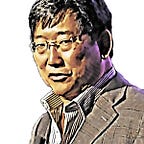Invent 21
About a year ago, as we went into the first lock down, a group of us, who have years of experience in enterprise infrastructure software organized to achieve a BHAG (Big Hairy Audacious Goal). That goal, our moon shot mission, is to enable a new generation of applications to access data from all 1,000,000 healthcare machines in all 500 children’s hospitals in the world. These applications could range from simple collaboration to the most advanced AI in medicine.
Like the mission to the moon, this mission will require a community. The first step is establishing the infrastructure. The BevelCloud team has created a new secure, scalable compute, storage and networking cloud service which provides the simplicity and economics of center cloud computing in any building in the world including hospitals, labs, and clinics. Center cloud computing from AWS, GCP and Azure provide scalable, secure compute & storage in an on demand business model from 10s of locations around the world. BevelCloud is doing the same in thousands of locations.
While infrastructure is cool to some of us, what you really want to know is what applications will this enable. We’re pleased to have several teams, who have joined this moon shot mission discuss their applications of the edge cloud.
TeleRay. Last year a boy in Southern California went undiagnosed with brain cancer for well over a month because 2 hospitals and one clinic could not exchange MRI Scans. TeleRay, brought to you by the guys that built the CD-ROM burning software you use today would have solved that challenge. By implementing a TeleRay edge cloud application they are able to exchange images across hospitals and clinics in Southern California and across the world. The founder and CEO is Timothy Kelley. Tim Kelly’s presentation.
Oomnitza. With ransomware on the rise, enterprises need to manage their laptops, home equipment, and cell phones. But what about the thousands of healthcare machines in the hospital? How are they being secured and managed? Oomnitza has taken their software to manage and secure all enterprise technology for Peloton, Carvana and Apple and applied it to securing and managing healthcare machines for the clinical engineer. By implementing an Oomnitza edge cloud application they are able to locate healthcare machines, access audit logs, and speed the service of any healthcare machine anywhere on the planet. The founder and CEO who has been named one of the Top 50 SaaS CEOs is Arthur Lozinksi. Arthur’s presentation on video.
Glendor. AI in Medicine, which holds great promise, has been stymied by the lack of access to the data. Need for privacy of patient data is one of the roadblocks. Glendor has built a fully automatic in situ PHI de-identification of medical images (pixels and meta data) at the edge, ensuring that the data is de-identified before it leaves the 3rd floor of the Hospital. The founder and CEO is Julia Komissarchik. Julia’s video presentation.
Dyad Medical. It’s often times difficult to visualize the implications of AI software technology. Dyadmed provides cardiac image analysis and interpretation in adult healthcare. By implementing an Dyad Medical edge cloud application they are able to access images which will enable the development of AI for kids. The founder and CEO is Ronny Shalev. Ronny’s conference presentation.
USC’s FedML. Training AI algorithms while preserving privacy and network bandwidth has been at the forefront of advances training Google keyboard, Siri and Alexa. Training these consumer applications is based on federated learning. Federated learning running in the edge cloud enables continuous, privacy and network preserving training and represents a big technology shift in AI for medicine. Salman Avestimehr will lead off the talk followed by his PhD student, Chaoyang He. Salman and Chaoyang on video.
Stanford’s Echonet Peds. We’ll end the conference where we this all started — at Stanford. The EchoNet Peds edge cloud application will automatically assess left ventricular ejection fraction. It was developed using centralized training techniques. Our next step is to test it at many different hospitals and then to improve accuracy using federated model to protect privacy and only transmit model parameters. Charitha Reddy is the leader of the project. Charitha’s presentation.
All of these applications are the tip of the iceberg. When the Internet started in 1994 could you have imagined it would change how you watch movies today? When you got your first cell phone fifteen years ago, could you imagine it would change how you navigate to a soccer game, get a ride, or order dinner?
If you didn’t get to attend Invent21, you can see all 7 episodes. Software can invent the future of children’s healthcare.
